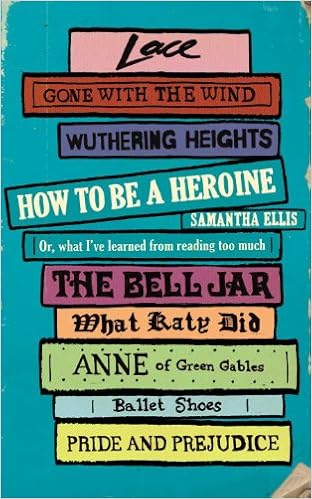Many years ago I removed a set of books from a classroom in a village school. It concerned a pretty little girl whose entire life was contained in her pretty little cottage with her only friends being those who delivered things to her house, just because she used a wheelchair. Even in the last century I thought it gave an incredibly negative view of the life of a disabled person, and little hope for any child who was told that they were different. My daughter (who does use a wheelchair) spends much of her time overturning expectations as she is a newly qualified doctor, and I am proud that she has risen above such negative messages. It’s a good job that she did not become keen on one of my favourite books as a child, What Katy Did by Susan Coolidge. Its message about a girl who falls from a swing is criticized roundly in one of my more recent favourite books, How to be a Heroine by Samantha Ellis.
In a way, this book of literary autobiography is the sort of book that many of us could have written. It goes through books, novels, which have been significant in the life of the playwright, Samantha Ellis. Its subtitle, “Or what I’ve learned from reading too much” rings a bell with many of us, as we have endured comments about our heavy reading habit since childhood. This is, however, a book of autobiography which is honest and moving in recalling a childhood in a family of Iraqi-Jewish refugees in London. This is in no way a miserable book as each novel is devoured by a girl seeking a way of living amidst a family keen to encourage a normal life of marriage and family. Instead it is a funny book with a realistic and sometimes frank view of love, life and literary role models.
The first book, or story, the Little Mermaid, causes the realisation that the heroine is willing to give up so much for the chance to win the love of the prince that its sadness is not in the original ending of the tale, but in the suffering that she endures. Anne of Green Gables has enormous dreams and a desire to write that transforms her life as well as those around her, but eventually gives up writing for domestic reality. Ellis asks about the role models that these heroines present, even though they are undoubtedly inspiring and entertaining. Lizzy Bennet gives more hope, while Scarlett O’Hara becomes a role model in for what she does not do, and say, as Ellis realises that she loves and acts on many levels.
I think that why enjoyed this book so much is that it follows my own favourite book list and discoveries that Flora Post, of Cold Comfort Farm is a funny book about those who want to solve people’s lives, and there are female characters who work together to change what is happening. Some readers may be shocked by the behaviour of some of the characters and novels which she chooses, many of which would not appear on any great literature list.
I particularly enjoyed Ellis’ discoveries about Sylvia Plath’s time at Cambridge, and her honest account of her time at the University. The real battle is between Cathy Earnshaw and Jane Eyre, in terms of wild romance versus the acknowledgement that real romance may be quieter, even if still complicated. Every book mentioned is referenced at the end in notes so it is easy to plug any gaps in your own reading. The general sense is that for a book obsessive, novels are not just entertainment but can be valuable insights into life and what it really means to be human.

I loved this book so much – glad to see that you did too!
Sounds like a good one! Quite fancy reading this myself.
This one keeps popping into view at odd moments; I have it on my wish list now and will continue to look out for it. Had you read every book she mentions, or did you know of them at least?
I have never actually read “Gone with the Wind”! I knew of the more racy titles, but could not claim detailed knowledge (though Ellis’ comments are very interesting…)